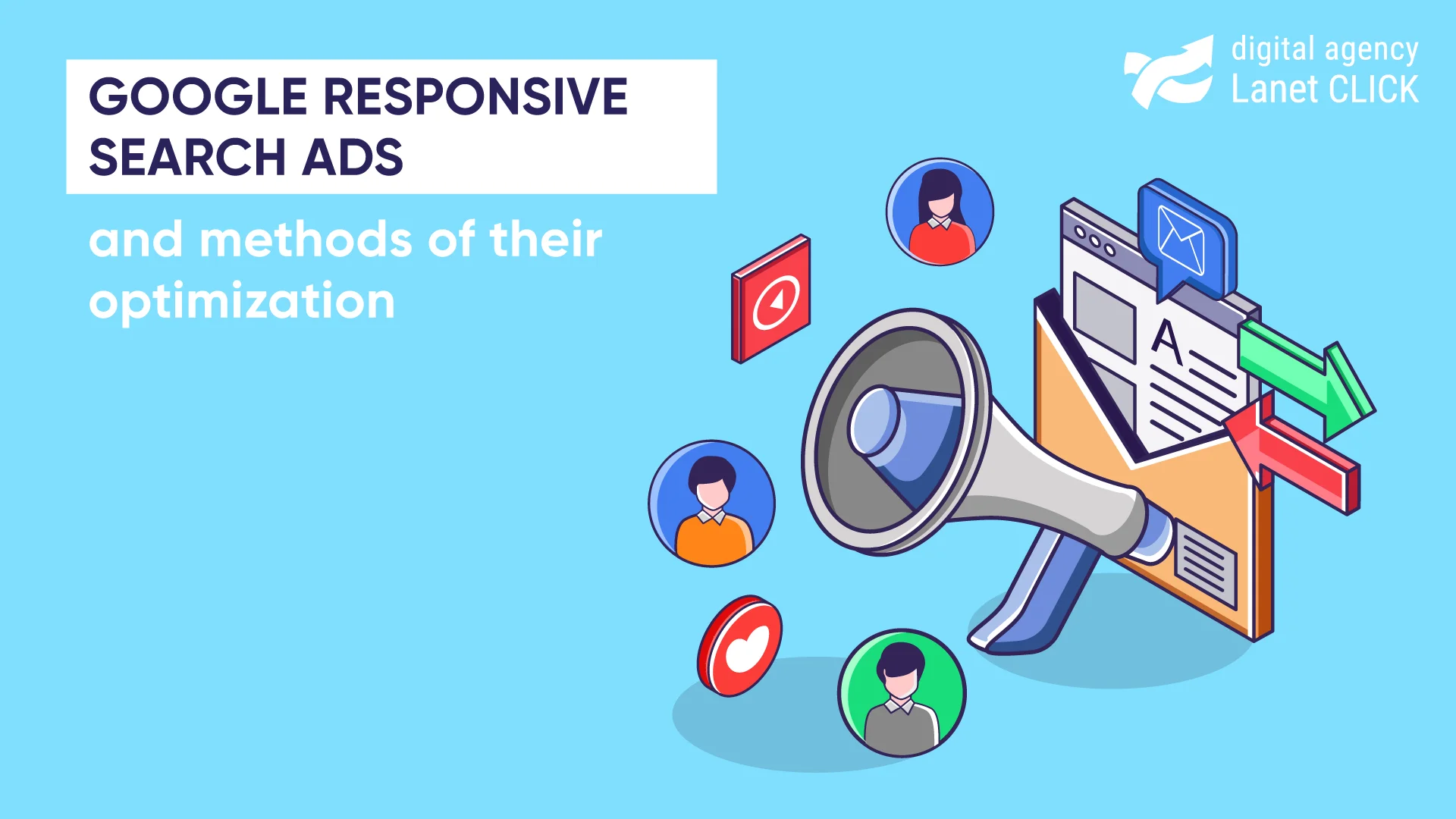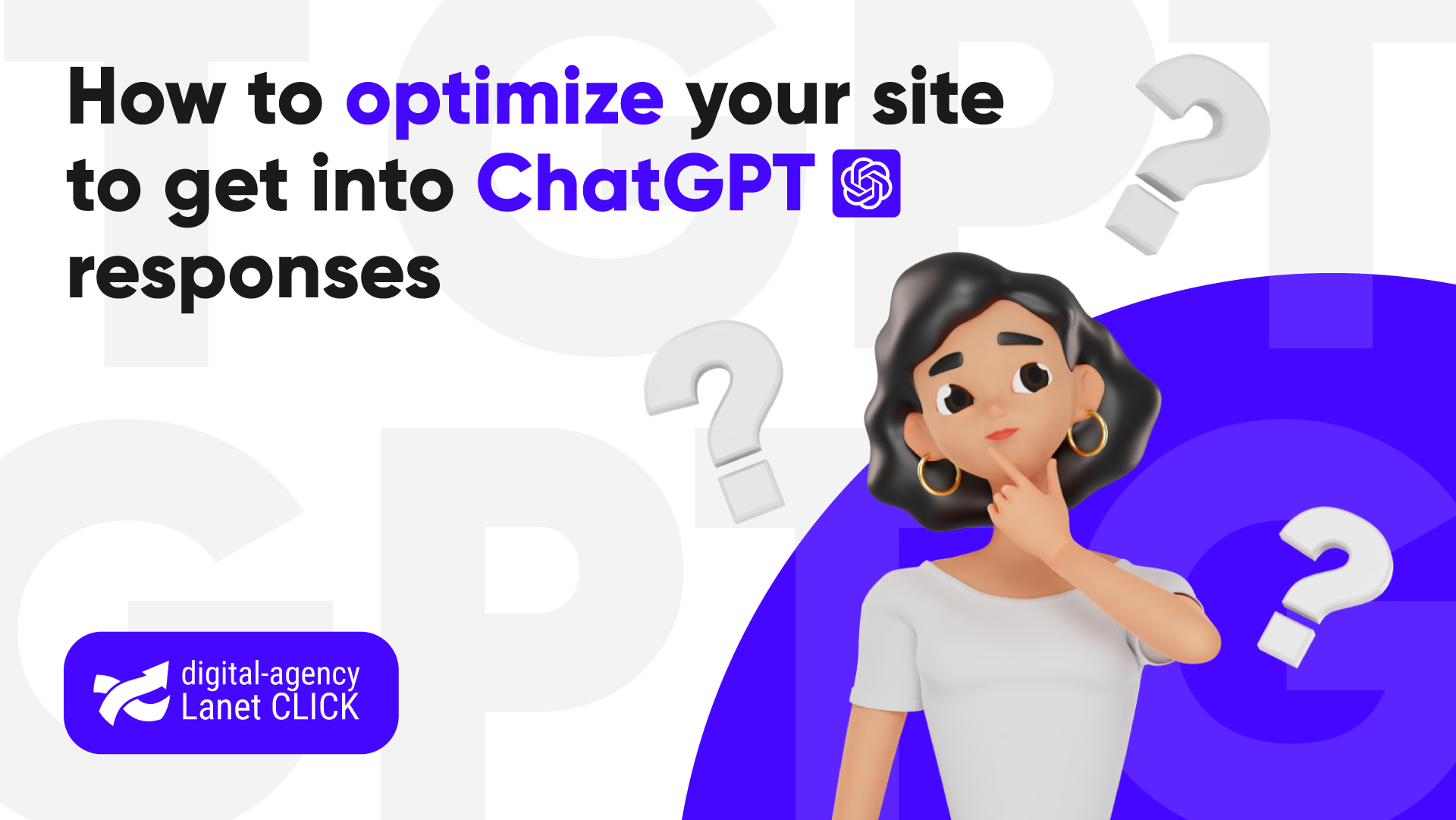
Lanet CLICK entered the TOP-8 digital agencies of Ukraine according to the Ringostat 2025 rating
Lanet CLICK was included in the list of the best digital agencies in Ukraine according to the Ringostat 2025 rating […]


Google Ads has introduced new changes to the search engine. Currently, the place of expanded text ads is gradually being taken by responsive ones. But this is only for the benefit of marketing specialists! We will discuss the advantages of Google responsive search ads for advertising your brand or company, the principle of their operation and methods of optimization in the material.
Responsive search advertising is one of the most effective contextual advertising tools. It is an ad that adapts to the user’s request and can change its content and appearance. That is, you write from 3 to 15 different headlines and 2-4 descriptions for the ad, and Google Ads combines these elements in a different order and shows them to users. It allows you to get many combinations and, as a result, experiment during the advertising campaign.
To begin with, you need to create as many titles and descriptions as possible to get as many combinations as possible. After you have prepared the texts, a system based on machine learning algorithms combines them. Then it tests them and chooses the ads that give the best results. And finally, based on the user’s request, the algorithm shows him the most suitable Google Ads responsive search ads.

Among the main advantages of such contextual advertising tool:
Creating a responsive search ad is a simple process. It can be used even by a beginner without much experience in setting up Google Ads.
To create a responsive ad, select «Ads and extensions» from the page menu, then click «Responsive Search Ad». Enter your page URL and display the path. And finally, add titles (up to 30 characters per ad) and descriptions (up to 90 characters). Click «Save».
But remember that for your responsive search ad to bring maximum results, consider a few nuances:
Regarding information content, consider the following important points:
Yes, your responsive search ads should be creative, as informative and useful as possible for searchers, show that you care about them and contain arguments in your favor. And then the audience will pay attention to your product.
From now on, every professional should review their strategies to improve their ad display. Optimizing responsive search ads takes a completely different approach than expanding text ads, as the two types of ads have significant differences.
Previously, advertisers could test expanded text ads with an advanced variation of A/B testing until they reached a limit of 50 ads per group. As for responsive ads, you can only test three per group.
With up to 4 body texts and up to 15 headlines for responsive ad combinations, you will have over 43,000 variations! It is significantly more than the allowed 50 deployed options.
But remember: when you’re comparing ads by performance, and you’re sure you know which one is the best, you can miss many other factors. So for more in-depth data, you should look at the combination reports, which show exactly which descriptions and titles were combined for each ad.
However, Google only shares the number of displays. Therefore, to calculate a winning ad, we need to know about CTR and conversion rate. And we no longer receive these metrics from Google at this level of detail, so at this stage, it is worth conducting a contextual advertising audit.
Previously, experts believed that displays depended only on the keywords of the ad group. But a tool like responsive search ad has radically turned this assumption upside down! And now, ad group displays can depend on both ads and keywords.
In May 2022, Optmyzr company provided a study and found that responsive ad groups received 2.1x more displays than groups with only expanded text ads.
As you can see, Google prefers responsive ones, especially those that contain the maximum number of combinations of titles and descriptions and use ad anchoring as rarely as possible too.

And to get the most out of responsive ads and at the same time stay ahead of your competitors, you should pay enough attention to ad optimization. So let’s share some tips with you.
First, add as many different headings as possible. This will allow the system to test the ads better and enable the specialist to use the maximum number of keywords. The latter will help reach a wider target audience and attract more potential customers. In addition, adding the maximum number of headlines also increases the number of displays, as it gives Google more flexibility to create the perfect ad for each situation.
Google Ads asset shortcuts show you which assets are performing well and which assets should be replaced after your responsive ad is finished running. Experts recommend observing them for two weeks and replacing them with low efficiency.
Combination reports show the specialist which combinations of ads are shown most often. They provide marketing specialists with an understanding of how Google’s optimization algorithms work and whether mistakes have been made.
It also allows you to check if Google offers text ad combinations that you don’t like or even look weird. After all, sometimes Google can combine text elements so that it does not suit you at all.
Properties in these reports should be reviewed to see how many displays they receive. If certain properties have a low number of displays, then it is worth replacing them.
This measure prevents ads from being shown to the wrong groups. If you set your bids manually and allow Google to show your responsive search ad to an audience less likely to reach you, this creates additional challenges. Instead, combining intelligent bidding with the automatic display of ads from Google will allow you to get good results.
A combined bidding approach can help marketing specialists get the most out of Google automation. After all, automation is the future of search ads. And every specialist should use Google’s machine learning systems 100%.

Responsive search Aad is a real marketing specialist’s assistant for promoting any project, business, local advertising campaigns, etc., on Google Display Network (GDN). This tool allows you to display ads on more resources, reach a much wider range of users and attract new traffic, and, besides, save the specialist’s time for analytics and solving questions about the effectiveness of the advertising campaign. And time, as we know, is a very valuable resource!

Lanet CLICK was included in the list of the best digital agencies in Ukraine according to the Ringostat 2025 rating […]

For a site to rank high in search results, it is important to work not only with content and technical […]

Artificial intelligence has already changed the rules of the game in search engines. Users are increasingly turning to ChatGPT and […]
A good strategy, perfectly selected digital tools, and their effective application will allow the business to increase profits, grow the customer base, and form recognition and loyalty. Do you want something like that? Contact us.
You have taken the first step towards effective online marketing. Our managers will contact you and consult you soon.